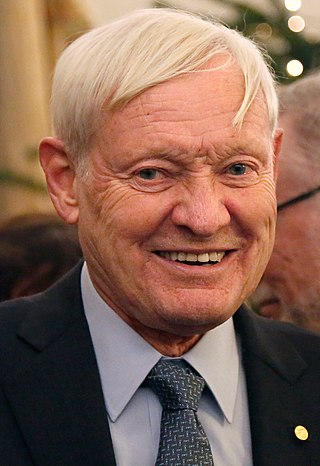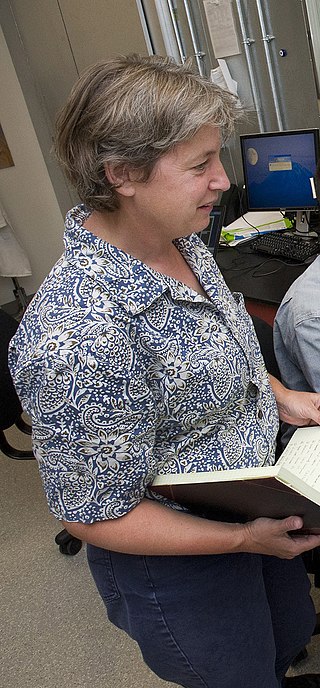
Microscopy is the technical field of using microscopes to view objects and areas of objects that cannot be seen with the naked eye. There are three well-known branches of microscopy: optical, electron, and scanning probe microscopy, along with the emerging field of X-ray microscopy.

A microscope is a laboratory instrument used to examine objects that are too small to be seen by the naked eye. Microscopy is the science of investigating small objects and structures using a microscope. Microscopic means being invisible to the eye unless aided by a microscope.
The microscopic scale is the scale of objects and events smaller than those that can easily be seen by the naked eye, requiring a lens or microscope to see them clearly. In physics, the microscopic scale is sometimes regarded as the scale between the macroscopic scale and the quantum scale. Microscopic units and measurements are used to classify and describe very small objects. One common microscopic length scale unit is the micrometre, which is one millionth of a metre.

John O'Donovan, from Atateemore, in the parish of Kilcolumb, County Kilkenny, and educated at Hunt's Academy, Waterford, was an Irish language scholar from Ireland.

Richard Henderson is a British molecular biologist and biophysicist and pioneer in the field of electron microscopy of biological molecules. Henderson shared the Nobel Prize in Chemistry in 2017 with Jacques Dubochet and Joachim Frank. "Thanks to his work, we can look at individual atoms of living nature, thanks to cryo-electron microscopes we can see details without destroying samples, and for this he won the Nobel Prize in Chemistry."
The Microscopy Society of America (MSA), founded in 1942 as The Electron Microscope Society of America, is a non-profit organization that provides microanalytical facilities for studies within the sciences. Currently, there are approximately 3000 members. The society holds an annual meeting, which is usually held in the beginning of August. It has 30 local affiliates across the United States. The society has a program for examining and certifying technologists of electron microscopes. The organization produces two journals: Microscopy Today, and Microscopy and Microanalysis. As of 2024, the President is Jay Potts.

The Royal Microscopical Society (RMS) is a learned society for the promotion of microscopy. It was founded in 1839 as the Microscopical Society of London making it the oldest organisation of its kind in the world. In 1866, the Society gained its royal charter and took its current name. Founded as a society of amateurs, its membership consists of individuals of all skill levels in numerous related fields from throughout the world. Every year since 1841, the Society has published its own scientific journal, the Journal of Microscopy, which contains peer-reviewed papers and book reviews. The Society is a registered charity that is dedicated to advancing science, developing careers and supporting wider understanding of science and microscopy through its Outreach activities.
William Cooke Taylor (1800–1849) was an Irish writer, known as a journalist, historian and Anti-Corn Law propagandist.

Sir Colin John Humphreys is a British physicist and a hobbyist Bible scholar. He is the Professor of Materials Science at Queen Mary University of London.
David Bernard Williams was the dean of the College of Engineering at the Ohio State University from 2011-2021. He was previously the fifth president of the University of Alabama in Huntsville in Huntsville, Alabama from March 2007 until April 2011, and Vice Provost for Research and Harold Chambers Senior Professor of Materials Science and Engineering at Lehigh University in Bethlehem, Pennsylvania.
The Quekett Microscopical Club is a learned society for the promotion of microscopy. Its members come from all over the world, and include both amateur and professional microscopists. It is a registered charity and not-for-profit publisher, with the stated aims of promoting the understanding and use of all aspects of the microscope.
Hans Ris was an American cytologist and pioneer electron microscopist. His studies of chromosome structure revealed the importance of non-histone proteins, and along with evolutionary biologist Lynn Margulis, he was one of the first to recognize that blue-green algae were a special type of bacteria. He coined the term genophore for prokaryote DNA to highlight its differences from the eukaryal chromosome. Ris was a founding member of the American Society for Cell Biology and received the Distinguished Scientist Award by the Microscopy Society of America in 1983.
The American Microscopical Society (AMS) is a society of biologists dedicated to promoting the use of microscopy.
Edward Hutchinson Synge was an Irish physicist who published a complete theoretical description of the near-field scanning optical microscope, an instrument used in nanotechnology, several decades before it was experimentally developed. He never completed university yet did significant original research in both microscopy and telescopy. He was the first to apply the principle of scanning in imaging, which later became important in a wide range of technologies including television, radar, and scanning electron microscopy. He was the older brother of distinguished mathematician and theoretical physicist John Lighton Synge.

Joachim Frank ; born September 12, 1940) is a German-American biophysicist at Columbia University and a Nobel laureate. He is regarded as the founder of single-particle cryo-electron microscopy (cryo-EM), for which he shared the Nobel Prize in Chemistry in 2017 with Jacques Dubochet and Richard Henderson. He also made significant contributions to structure and function of the ribosome from bacteria and eukaryotes.
The European Microscopy Society is an international learned society which represents the field of microscopy in Europe. It was founded in 1998 following the disbanding of the Committee of European Societies of Electron Microscopy as a union of national microscopical societies. The society acts as a regional committee of the International Federation of Societies for Microscopy.
The International Federation of Societies for Microscopy is an international non-governmental organization representing microscopy. It currently has 36 national members and 7 associate members, which are split into three regional committees, the Committee for Asia-Pacific Societies of Microscopy, the European Microscopy Society and the Interamerica Committee for Societies for EM.

Frances Mary Ross is the Ellen Swallow Richards Professor in Materials Science and Engineering at Massachusetts Institute of Technology. Her work involves the use of in situ transmission electron microscopy to study nanostructure formation. In 2018 she was awarded the International Federation of Societies for Microscopy Hatsujiro Hashimoto Medal. Ross is a Fellow of the American Association for the Advancement of Science, the American Physical Society, the Microscopy Society of America and the Royal Microscopical Society,
Thomas Fleming Bergin was an Irish civil engineer and early Irish railway official. He was the Company Clerk of the Dublin and Kingstown Railway (D&KR), the first public railway in Ireland. He was also responsible for the design of the Bergin Patent Spring Buffer, the buffering system that it used.
Peter David Nellist is a British physicist and materials scientist, currently a professor in the Department of Materials at the University of Oxford. He is noted for pioneering new techniques in high-resolution electron microscopy.








